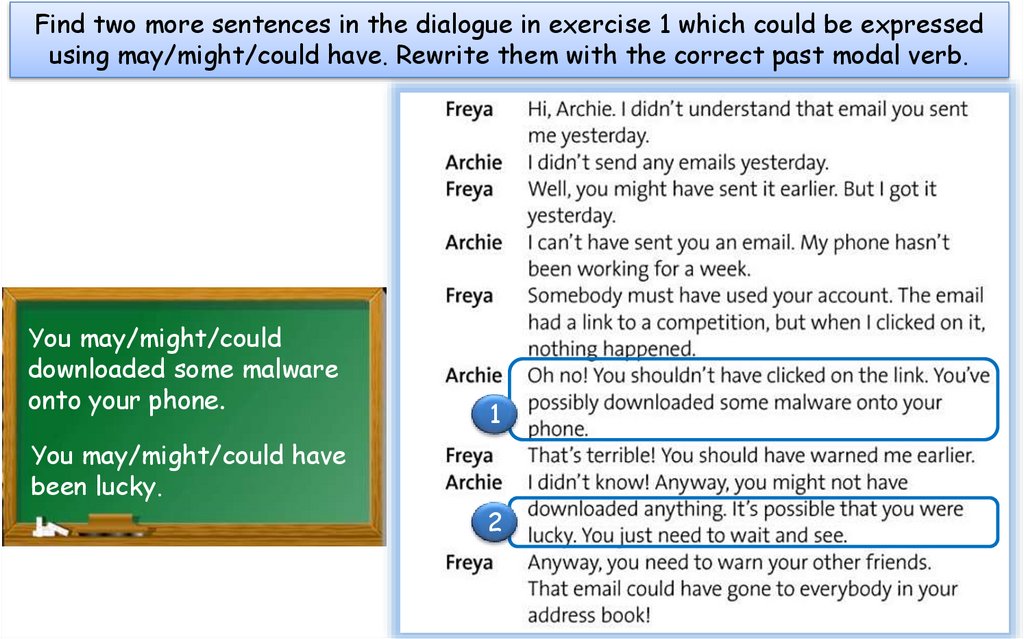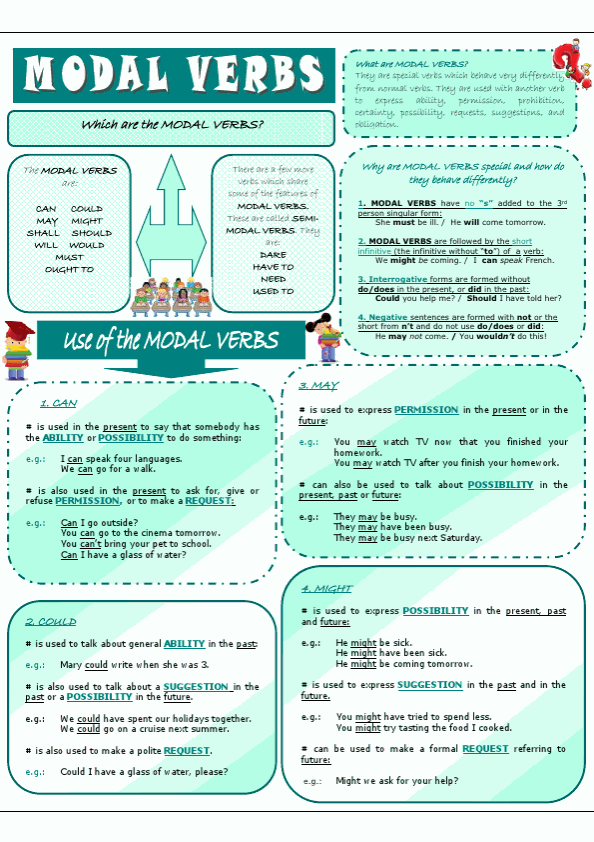
If the question is about a negative statement, the student needs to find someone who answers 'No, I didn't'. When a student finds someone who answers 'Yes, I did' to a question made from a positive statement, they write down that person’s name. Next, students go around the class asking one another their questions. 'When you were young, did you have to go to school by bus?' Students also create two more questions of their own at the bottom of the worksheet. Students start by turning each statement on the worksheet into a question, e.g. In the activity, students ask and answer questions about what they were obligated to do when they were children.

Past modal verbs exercises how to#
This past obligation activity helps to teach students how to express obligation in the past with 'had to' and 'didn't have to'. Finally, students go around the class reading their sentences to other pairs who try to guess the place being described. Afterwards, pairs think of a place and write five rules for that place using modals of obligation. The first pair to do this correctly wins. Students then read the sentences and decide which rules are for a museum and which are rules for a swimming pool.

Next, students refer to the sentences they just wrote down and complete rules with the modals of obligation: must, mustn't, have to, don't have to, should or shouldn't. The students then swap roles for Text B and the process is repeated. This continues until all the sentences in Text A have been dictated.

The reader runs to Text A, reads the first sentence, remembers it, runs back and dictates it to the writer who writes the sentence on the back of their worksheet. One student is the reader and the other is the writer. In this fun modals of obligation running dictation activity, students practice completing and writing rules for various places.


 0 kommentar(er)
0 kommentar(er)
